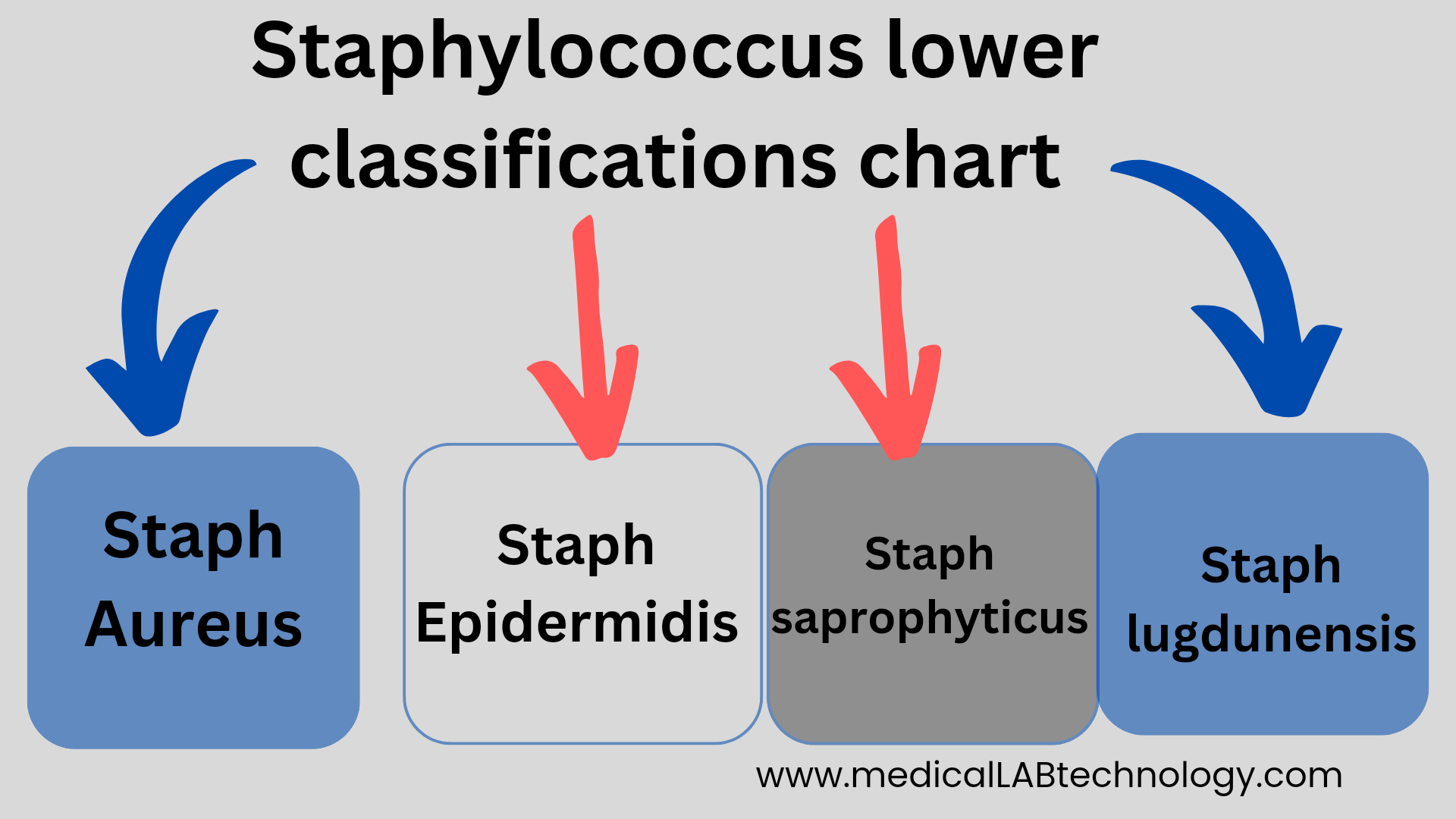Here’s the “Staphylococcus lower classifications “.
Staphylococcus is a genus of bacteria that includes several species which are classified on the base of gram staining, which are gram-positive, spherical-shaped bacteria that are commonly found on the skin and mucous membranes of humans and animals.
These bacteria are known for their ability to cause a variety of infections, ranging from minor skin infections to life-threatening conditions such as sepsis and endocarditis.
Staphylococcus bacteria are classified into several different groups or species, based on their genetic and biochemical characteristics. These groups are further divided into subgroups, each with unique properties and behaviors.
Lower Classifications of staphylococcus bacteria
Staphylococcus classified into four subgroup.
- Staphylococcus Aureus
- Staphylococcus Epidermidis
- Staphylococcus saprophyticus
- Staphylococcus lugdunensis
Staphylococcus Aureus characteristics
Following are the characteristics of staph. aureus
- Staphylococcus aureus is the most well-known species of Staphylococcus bacteria.
- It is a gram-positive, spherical-shaped bacteria that is commonly found on the skin and in the nasal passages of humans.
- While many people carry S. aureus without experiencing any symptoms, this bacteria can cause a range of infections, from minor skin infections like boils and impetigo to more serious conditions like pneumonia, sepsis, and endocarditis.
- S. aureus is also known for its ability to develop resistance to antibiotics, making it a significant public health concern.
Staphylococcus Epidermidis characteristics
Following are the characteristics of staph. Epidermidis
- Staphylococcus epidermidis is another common species of Staphylococcus bacteria that is found on the skin and mucous membranes of humans.
- Unlike S. aureus, S. epidermidis is typically considered a commensal bacterium, meaning that it exists harmlessly in a symbiotic relationship with its host.
- S. epidermidis can cause infections such as endocarditis and bloodstream infections.
Staphylococcus saprophyticus characteristics
Following are the characteristics of staph saprophyticus.
- Staphylococcus bacteria that is commonly found in the urinary tract of sexually active young women.
- It cause urinary tract infections (UTIs), which are typically less severe than those caused by S. aureus.
- S. saprophyticus is known for its ability to adhere to the urinary tract, which allows it to colonize and cause infections.
